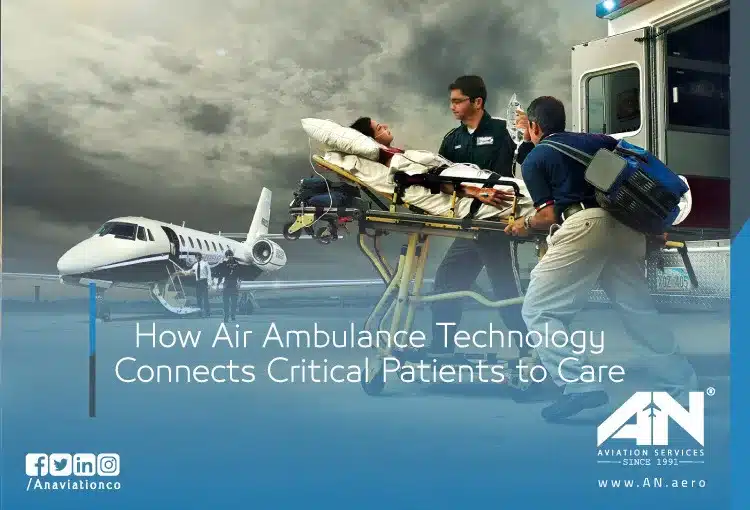
Air ambulance technology has revolutionized emergency healthcare, providing critical patients with swift access to lifesaving care. Whether navigating remote locations or ensuring rapid transport to specialized facilities, air ambulance services have become indispensable. With real-time technologies, advanced medical equipment, and highly trained medical crews, these operations deliver critical care in the sky. Let’s explore how air ambulance technology connects patients to timely and effective care.
The Core of Air Ambulance Technology
At the heart of air ambulance operations lies cutting-edge technology designed to support critical care during transport. Aircraft used in these operations, such as helicopters or fixed-wing planes, are equipped with state-of-the-art medical systems that mimic hospital ICU setups. From real-time patient monitoring to specialized medical devices, these aircraft ensure that critically ill or injured patients receive continuous and advanced care.
One of the significant advancements in air ambulance technology is the integration of real-time monitoring systems. These systems allow medical crews to track a patient’s vital signs—such as heart rate, oxygen levels, and blood pressure—while in flight. This data can also be transmitted to receiving hospitals, enabling medical teams on the ground to prepare for immediate intervention.
The Role of Advanced Medical Equipment
The equipment onboard air ambulances is designed specifically for critical care. Key features include:
- Ventilators and oxygen systems to assist patients with respiratory difficulties.
- Defibrillators and cardiac monitors to stabilize heart conditions during transport.
- Portable ultrasound and imaging devices for quick diagnosis in flight.
These tools not only provide essential medical support but also ensure that care is uninterrupted during the transfer from the accident site to a medical facility.
Real-Time Communication and Coordination
Another cornerstone of modern air ambulance technology is real-time communication systems. Using satellite and GPS technology, air ambulance crews maintain constant contact with air traffic control, ground teams, and healthcare facilities. This coordination minimizes delays and ensures seamless transitions from one phase of care to the next.
Real-time navigation systems also enhance operational efficiency, ensuring the aircraft takes the safest and fastest route to the medical facility. This level of precision is particularly important during extreme weather conditions or in remote areas where traditional ambulances cannot reach.
The Role of Medical Crews in Air Ambulance Services
Air ambulance crews play an essential role in ensuring critical patients receive the best care during transport. These professionals, typically composed of paramedics, nurses, and physicians, undergo rigorous training in handling emergency situations in the air.
The medical crew’s responsibilities include:
- Administering advanced medical procedures mid-flight.
- Monitoring patient conditions and making adjustments as needed.
- Communicating with hospital staff to ensure continuity of care upon arrival.
Having a highly skilled medical crew onboard ensures that air ambulance operations are not only fast but also safe and effective.
Critical Care for Diverse Emergencies
Air ambulance services are often utilized for patients with severe injuries or life-threatening conditions. Here’s how they serve various emergencies:
- Trauma Patients: For patients in critical condition after accidents, air ambulances ensure rapid transport to trauma centers.
- Cardiac Events: Specialized equipment onboard allows crews to stabilize patients suffering from heart attacks or other cardiac emergencies.
- Neonatal Transport: Air ambulances are equipped with incubators and neonatal specialists to transfer premature or critically ill infants.
These examples highlight the life-saving importance of air ambulance operations in connecting patients to advanced care.
Innovations Shaping the Future of Air Ambulance Technology
As technology continues to evolve, air ambulance services are expected to become even more efficient. Key innovations include:
- AI-Driven Diagnostics: Artificial intelligence tools can provide instant analysis of patient data, helping crews make informed decisions in real time.
- Drones for Medical Supplies: Some operations are experimenting with drones to deliver essential supplies to remote locations before air ambulances arrive.
- Eco-Friendly Aircraft: With a focus on sustainability, electric or hybrid-powered air ambulances are being developed to reduce the environmental impact of these operations.
Such advancements aim to enhance the efficiency, safety, and environmental responsibility of air ambulance services.
Why Air Ambulance Technology Matters?
The combination of advanced technology, skilled medical crews, and real-time communication systems makes air ambulance operations a critical component of modern healthcare. In emergencies where every second counts, these services ensure that critical patients receive timely and effective care, often making the difference between life and death.
From life-saving interventions in mid-flight to seamless coordination with ground facilities, air ambulance technology represents the pinnacle of emergency medical innovation.
Conclusion
Air ambulance technology has redefined the way emergency medical care is delivered, offering hope and support to critical patients when they need it most. Through advanced equipment, real-time systems, and skilled medical crews, these services bridge the gap between remote locations and specialized care facilities. As innovations continue to shape the future of air ambulance operations, they will undoubtedly play an even greater role in saving lives and improving emergency care worldwide.

